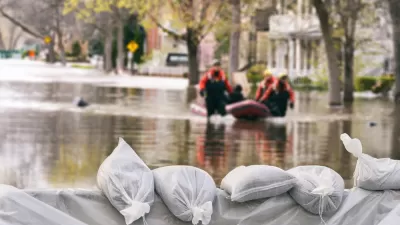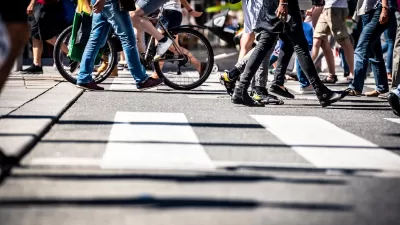As weather events become more intense and unpredictable, transit agencies must take steps to protect their aging infrastructure from flooding, storms, and extreme heat.

Writing in Next City, Whitney Bauck outlines some solutions for protecting public transit systems from extreme weather and other climate-related problems. “Transportation is responsible for 27% of U.S. carbon pollution, and public transit is a key tool for bringing those emissions down,” writes Bauck. “If train and bus service is disrupted by extreme weather, people may turn to more emissions-intensive ways of getting around, creating a negative feedback loop that fuels the global temperature rise that caused the disruptions in the first place.”
Bauck quotes Yonah Freemark, senior research associate at the Urban Institute, who says that one key factor is structural improvements: pointing to the flooding that has occured in New York City’s subway system, Freemark says “it’s crucial to address any potential entry points where water can get into the system, whether from sea water, as New York City saw in the case of Hurricane Sandy, or from excessive rain, as in the case of Hurricane Ida.” Alex Engel, senior communications manager at NACTO, adds that bus systems are also vulnerable to weather events, saying “climate adaptation needs to include the construction of high-quality bus shelters that shield riders from the elements in extreme heat and storms if they want passengers to keep using the bus system.”
In addition to transit infrastructure itself, preserving access to transit also means maintaining the routes that people use to get to and from transit stops. “When sidewalks are poorly paved, curb ramps are deprioritized and bike lanes aren’t protected, riders who need public transit the most — the vision-impaired, wheelchair users, or anyone who lives far from the places they need to go — may be unable to get to and from public transit stations safely.” Bauck highlights the benefits of greening cities with projects such as bioswales, trees, and landscaping that mitigate the effects of extreme heat and flooding and reduce air and water pollution, improvements that can help make and keep transit systems safe, efficient, and comfortable for riders.
FULL STORY: Extreme Weather Is Only Getting Worse. Can Cities Protect Public Transit?

Maui's Vacation Rental Debate Turns Ugly
Verbal attacks, misinformation campaigns and fistfights plague a high-stakes debate to convert thousands of vacation rentals into long-term housing.

Planetizen Federal Action Tracker
A weekly monitor of how Trump’s orders and actions are impacting planners and planning in America.

San Francisco Suspends Traffic Calming Amidst Record Deaths
Citing “a challenging fiscal landscape,” the city will cease the program on the heels of 42 traffic deaths, including 24 pedestrians.

Adaptive Reuse Will Create Housing in a Suburban Texas Strip Mall
A developer is reimagining a strip mall property as a mixed-use complex with housing and retail.

Study: Anti-Homelessness Laws Don’t Work
Research shows that punitive measures that criminalized unhoused people don’t help reduce homelessness.

In U.S., Urban Gondolas Face Uphill Battle
Cities in Latin America and Europe have embraced aerial transitways — AKA gondolas — as sustainable, convenient urban transport, especially in tricky geographies. American cities have yet to catch up.
Urban Design for Planners 1: Software Tools
This six-course series explores essential urban design concepts using open source software and equips planners with the tools they need to participate fully in the urban design process.
Planning for Universal Design
Learn the tools for implementing Universal Design in planning regulations.
Heyer Gruel & Associates PA
JM Goldson LLC
Custer County Colorado
City of Camden Redevelopment Agency
City of Astoria
Transportation Research & Education Center (TREC) at Portland State University
Jefferson Parish Government
Camden Redevelopment Agency
City of Claremont





























